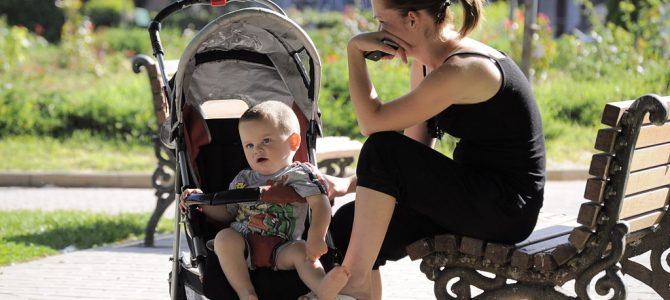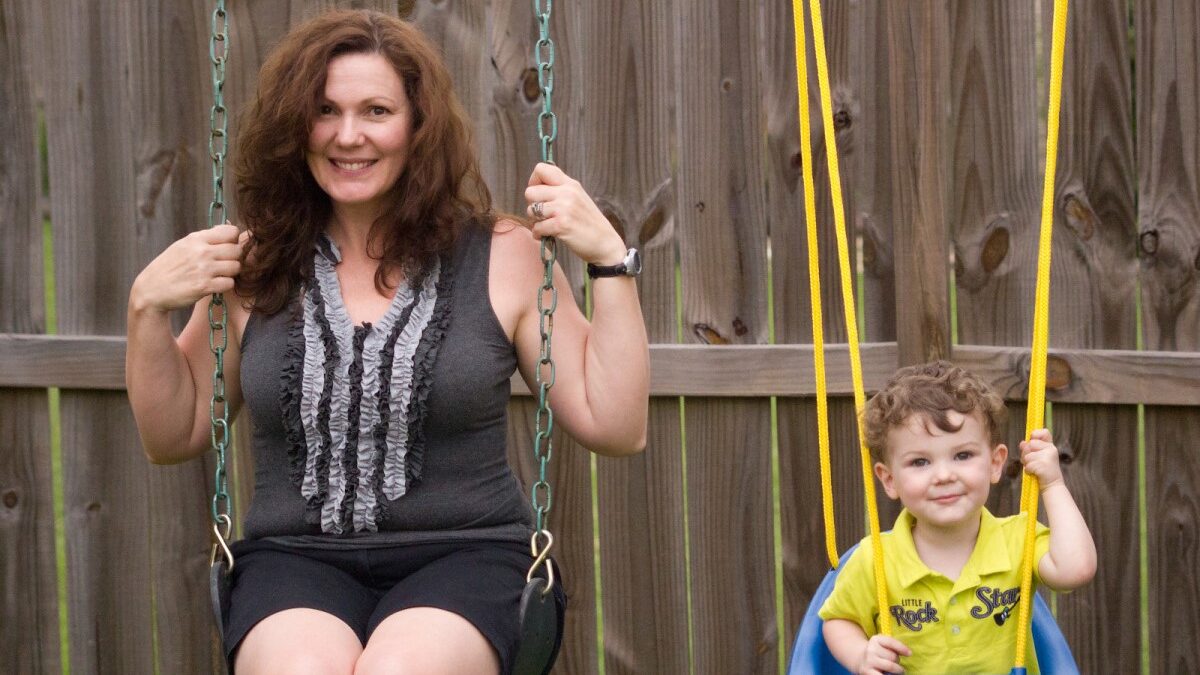
During the recent British prime minister race, candidate Andrea Leadsom made the following comment: “Genuinely I feel that being a mum means you have a real stake in the future of our country, a tangible stake.” Many said the statement sounded like criticism against Leadsom’s Tory leadership rival then, Theresa May, who is now the new U.K. prime minister.
It’s hard to say whether Leadsom was engaging in “mommy wars” rhetoric against May, who has no children. At any rate, Leadsom apologized, and stepped down as PM contender. May, it turns out, has been married for almost 40 years; she and her husband wanted children, but couldn’t have any. Many lessons can be learned from this little episode, the most obvious being: you do not know the mind and heart of another person, so be charitable!
It’s true that everyone, whether a mother or not, has a tangible stake in the future of their country. But mothers also carry a certain anxiety concerning their children’s fate. In light of the thinning middle class (see here, here, here, and here), some of our children may not be better off than we are. The upward mobility and economic progress we’ve enjoyed, which has generally allowed each generation to land in a slightly better place than their parents, may be slowing down.
If this continues, some of our daughters may not be able to take the at-home option as mothers. Those of us who care about the future of the family (whether we have children or not, and whether we are married or not) should discuss the future of the at-home mom option. Certainly this is largely an economic issue, but here I want to approach the question from a primarily cultural perspective.
Nostalgia for the Stay-At-Home Mom
In his newest book, “The Fractured Republic,” Yuval Levin discusses the particular set of circumstances that coalesced after World War II to give us what some call the “golden age” of America—the midcentury decades. This was the age of national pride and cultural cohesion. While other countries took time to recover after the devastation of that war, America “emerged as a strong, unified, global colossus…embark[ing] on a period of extraordinary economic growth accompanied by impressive cultural dynamism and liberalization….low economic inequality, high confidence in national institutions, and widespread optimism about the nation’s prospects.”
We moderns, Levin says, hanker after a fabled lost paradise. “We are frustrated because we are so nostalgic” he goes on to say. We are nostalgic for what we believe is a “lost ideal.” Because of this, we tend to forget or diminish the troubles of those years: “epic battles over communism, civil rights, Vietnam, Watergate, and countless other fronts: the burning cities, the political assassinations, the campus radicalism, and the social breakdown of that time.”
This very nostalgia plagues some conservatives fighting for “family values” in our culture. This is nowhere more evident than in playing up the midcentury stay-at-home-mom—the bête noire of radical feminism. This nostalgia lends credibility to the farce that we have fallen from an ideal in the arena of motherhood. That lie hurts our cause.
We are broken human beings, and we have not hitherto arrived at the ideal, especially regarding women and motherhood. To pretend otherwise only hurts those of us who are at-home moms and trying to make a more robust case for this vocation, rather than one based on “the good old days.” As Mark Perry says, “The ‘good old days’ are now.” What of our sisters who don’t have this privilege — are they lesser mothers?
Since time immemorial, with the exception of very rich people who could afford servants and child care, women worked. Women had to work. (Prior to the Industrial Revolution, the home was an economic center.) I’ve discussed some of this before. The postwar strong economic expansion, job security, and innovation in household appliances created what we call “the stay-at-home wife and mother.” The era is signified, in movies and many memories, as a time when the family had a suburban home, appliances did much of the housework, and the mother could be home with the children while the father went off to a decent job that gave the family this standard of living.
We forget that along with these comforts came weakness and vice: the acedia that sets in when a human person does not live up to his or her full potential. We forget this golden age was concurrent with the tsunami of the sexual revolution, the identity crises, the valium, the tedium, the rise of divorce rates. Levin writes truly: we tend to forget or diminish the turbulence and troubles of those years. We like to remember June Cleaver but tend to forget Betty Draper.
I am not claiming there has been no family and social breakdown, but agreeing with Levin that the question is not “How do we get back there?” There is no going back. Nostalgia only distracts and blinds us from finding good solutions and a way to navigate the constellation of family issues.
The Reality of the Modern At-Home Mom
Throughout human history there have been good mothers and bad mothers. Some rich, others poor. Maybe it’s that I’m an immigrant raised with a different culture that distributes responsibility for the health of the family on multiple generations of households, not laying it all on the shoulders of the mother. Maybe as a poor latch-key kid who had the library for a nanny I never reaped the rewards of this phenomenon. Or maybe I allowed these experiences to haunt me, making myself vulnerable to idolizing this wonder woman we know as the stay-at-home mom. The reality is that the golden-age stay-at-home mom was not the perfection of womanhood and motherhood.
Back in that “golden age” some people experienced or saw some of the turbulence that afflicted family life. The cure given by radical feminism—a Marxist cabal if there ever was one—was worse than the disease. Betty Friedan misdiagnosed “the problem with no name.” The problem with no name is anthropological. It was and is an identity crisis for women.
Hoping for emancipation from (perceived or real) ungrateful husbands and children, the mind-numbing household chores, the empty and mundane, the mothers of that era went off to work looking for fulfillment and self-actualization. But as Danielle Crittenden Frum writes in “What Our Mothers Didn’t Tell Us,” our generation of women have come full circle. Modern working women find themselves just as unsatisfied, now with the added stress overdemanding bosses, daycares, and nannies.
Whether the modern mother works outside the home or not, we again face the empty and mundane, anxiety and guilt, the interior wounds that no material comfort can ameliorate. That is because “the problem with no name” was never rightly diagnosed and treated. (See my discussion on why feminism and the sexual revolution did not destroy families and communities in Iraq the way it did in the West.)
Aside from the female identity crisis, women in general have definitely grown as mothers in some ways. We understand more about the physical, social, and psychological health of our children. In general parents are more apt to engage in direct play with their children. Part of this comes from a better understanding we have of childhood development.
But along with strengths and conveniences today, we also have our share of trouble. Writing about the characteristic of contemporary teenage music in her book “Home-Alone America,” Mary Eberstadt says what sets this music apart from the rock and roll of the previous generation is “its compulsive insistence on the damage wrought by broken homes, family dysfunction, checked-out parents, and (especially) absent fathers.” The moms and dads of my generation and the one arising suffered greatly from the social ills Eberstadt writes about. They are the daycare, behavioral drug generation raised by parent substitutes.
These are the parents coming of age, but as in every other generation, we have strengths and weaknesses—advances and setbacks.
The Lack of Robust Mom Communities
The modern, middle-class, first-world person enjoys the equivalent standard of living of a person from antiquity who had 500 servants. Think of that staggering number. It shows one of our modern weaknesses is comfort. Nassim Nicholas Taleb in “Antifragile” writes:
Many, like the great Roman statesman Cato the Censor, looked at comfort, almost any form of comfort, as a road to waste. He did not like it when we had it too easy, as he worried about the weakening of the will. And the softening he feared was not just at the personal level: an entire society can fall ill. Consider that as I am writing these lines, we are living in a debt crisis. The world as a whole has never been richer, and it has never been more heavily in debt, living off borrowed money. The record shows that, for society, the richer we become, the harder it gets to live within our means. Abundance is harder for us to handle than scarcity.
The paradox of abundance and scarcity, wealth and poverty, comfort and waste, inflicts the at-home mother in very peculiar ways. Community-building was more common in times of scarcity, when our need for each other was more apparent.
There are always exceptions, of course, but generally, why don’t we see the at-home mothers of today building strong communities? Given the strong push against radical feminism, and the proliferation of at-home mothers, where are those strong middle layers of society? Where are those formidable communities of mothers who with solidarity pitch in to help fellow women who take a job outside the home? Where does our time and wealth go? Why is the refrain of so many—and I am guilty of this— “I’m so busy?” What are we “busy” with?
I raise all these question not because I have all the answers. One to begin with is: Comfort and individualism. We have all drunk from the well of autonomy and modern comfort, not realizing how thoroughly we’ve been affected.
The Future of the At-Home Mom
What many miss when talking about family and community is this: The two-parent, biologically intact natural family is itself a product of individualistic thinking. So we research and analyze but the whole time we’re missing something right under our nose, a variable we’ve assumed is immutable.
Family breakdown didn’t happen exclusively as a direct result of radical feminism and the sexual revolution, although those accelerated it. The breakdown began when we reduced the idea of what a family is to the bare bones of two parents and their children—what came to be called the nuclear family. But from time immemorial family included many more people in its definition.
If men and women seeking comfort and independence move away from (extended) family, why is it surprising that people within the nuclear family eventually began distancing themselves from one another: mothers from fathers, fathers from children, and children from parents.
I am no sibyl, but I will venture some thoughts on the estate and future of mothers, and especially at-home mothers. The vocation of motherhood can be held in esteem only if those of us carrying it out do so with transparency and charity. No articles, as helpful as those may be, can take the place of living it out. In “Home-Alone America,” Mary Eberstadt writes this convicting statement: “We buy more books to tell us how to rear our children instead of just sitting on the floor with them a lot and figuring it out for ourselves.”
I’d like to think there will always be a desire in mothers’ hearts to raise their own children. But I hope today’s mothers are realizing they cannot do it all, that they need the help of family and a trustworthy community. This will be especially important if the middle class continues to thin out and some of our daughters are driven to a lower economic status.
I’ve lived long enough now to see the children of some working mothers grow up to be good adults and great parents in their own right, and children of some stay-at-home mothers who have gone the other way, and everything in between. But as my husband is wont to say to me: “Don’t let the perfect be the enemy of the good.”
In every generation there are good and bad mothers, and in every generation society is a mix of virtue and vice. Motherhood drenched in nostalgia and perfectionism breeds misery. We will never have the perfect, nor will our daughters, but we can all most certainly strive for the good.









